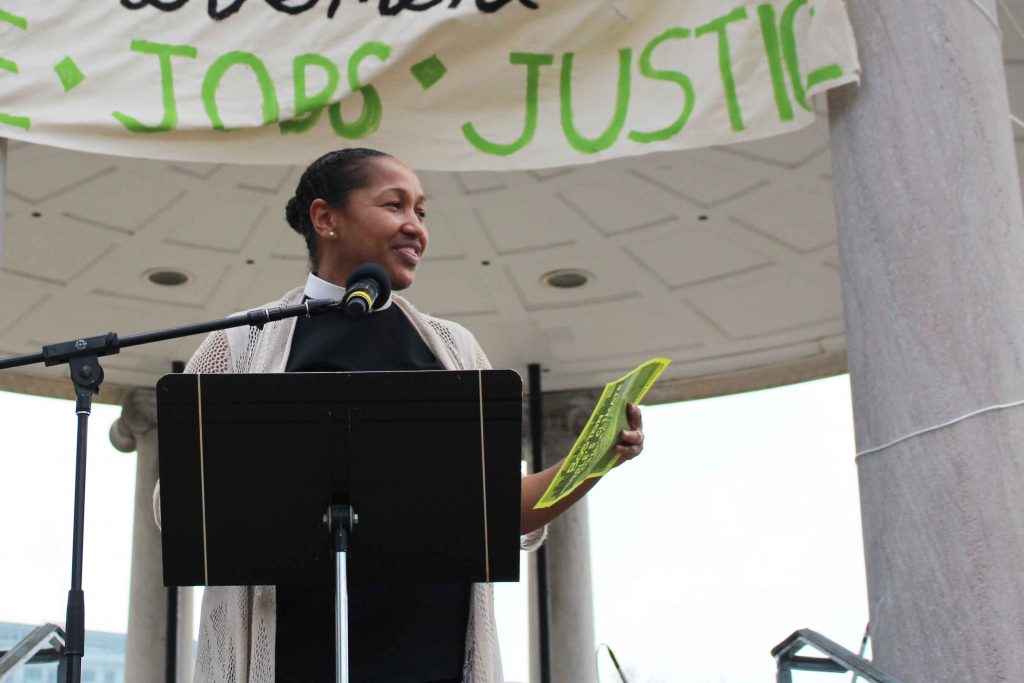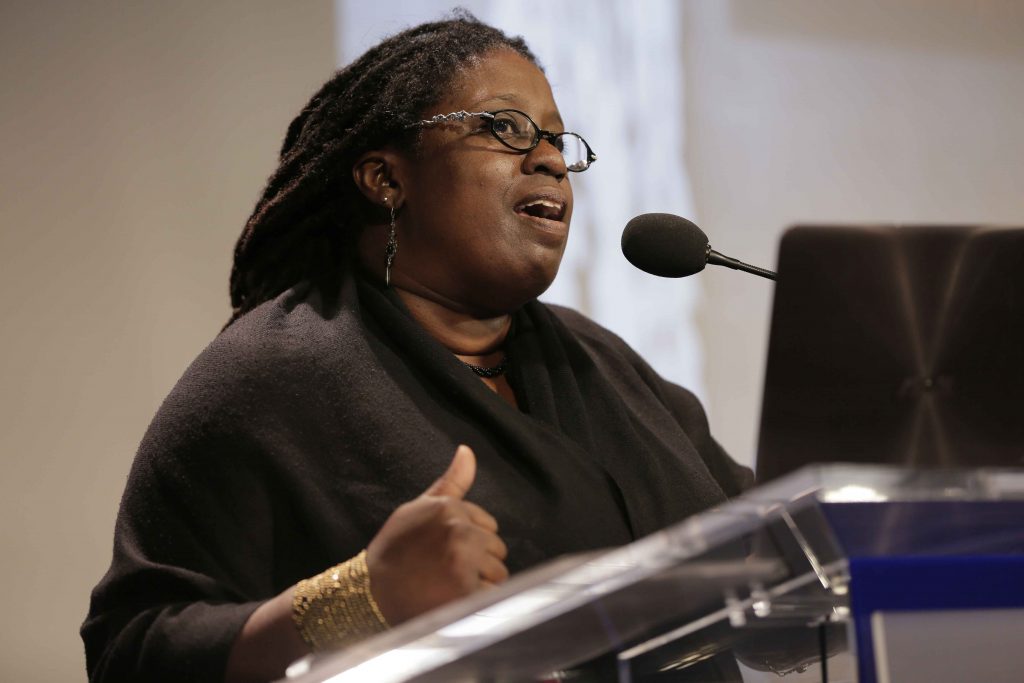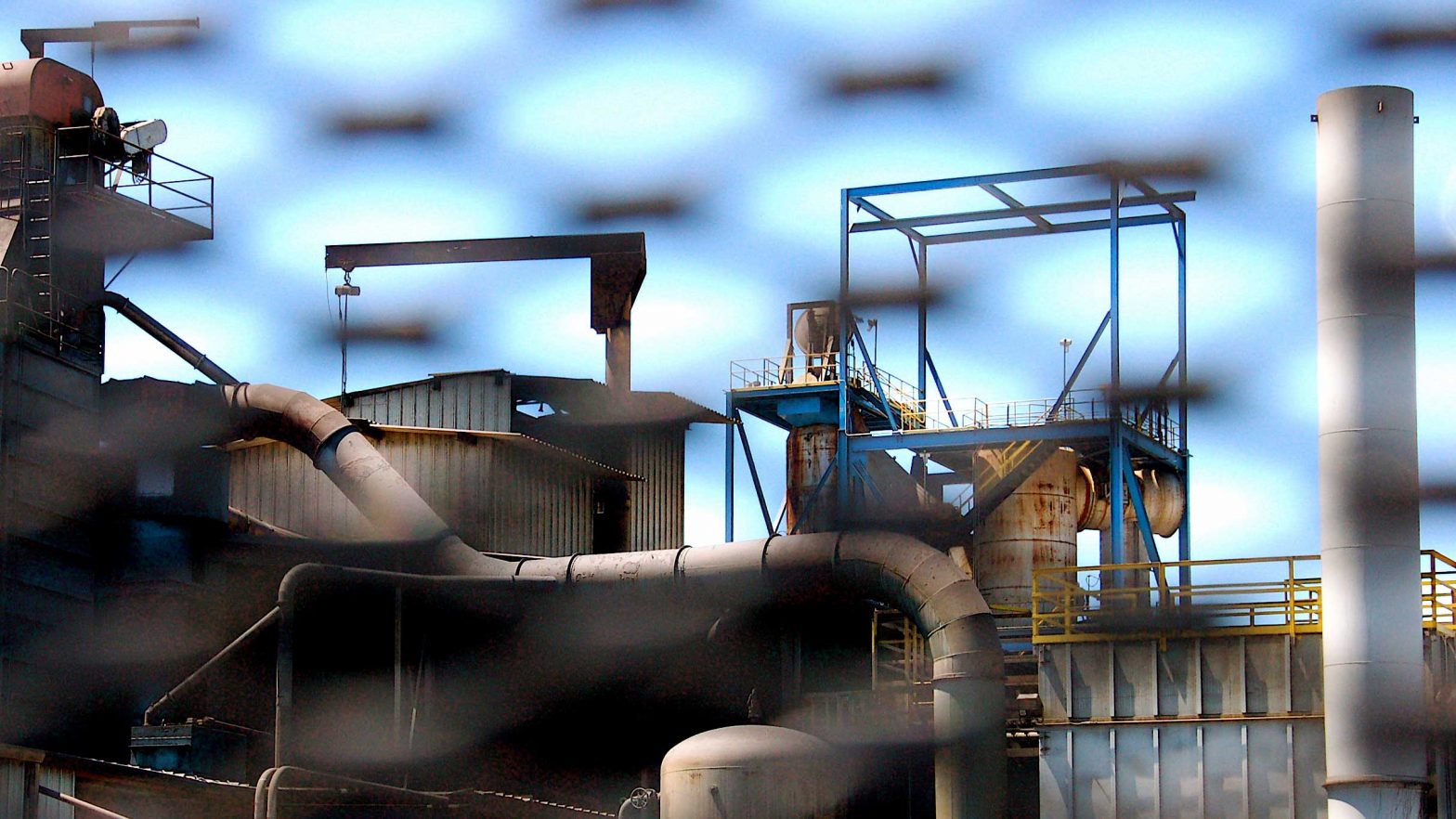Following its landfall in 2005, Hurricane Katrina would prove to be a watershed moment for the United States. The disaster that killed over 1,500 and caused upwards of $160 billion in damage highlighted for many the ugly realities of both climate change and racial injustice.
In the aftermath of Katrina, the population of New Orleans, a majority Black city, fell by 29 percent between 2005 and 2011. Today, Black household income remains significantly lower in the city since 2005. For many, including Reverend Mariama White-Hammond, the hurricane first drew the connection between the two seemingly disparate issues.
“Hurricane Katrina was the first moment where I started to see that our poor relationships with humans and our poor relationships with the Earth might have a connection,” said White-Hammond, the founding pastor of New Roots African Methodist Episcopal Church in Dorchester, Massachusetts, and an environmental and social justice activist.
But to White-Hammond, the existing environmental and social justice approaches don’t adequately capture the depth and interconnectedness of the problems. “I do ecological justice,” White-Hammond said. “Ecology is the study of relationships, and my belief is that there’s a problem in our relationships that we need to fix.”

The shift to ecological justice and its emphasis on relationships was for White-Hammond an absolutely necessary evolution in the environmental movement. To her, the larger environmental movement was more often concerned with issues—coral bleaching, species extinctions, and so on—that are literally far away from the everyday plights of the disenfranchised individuals she knew. That distance made White-Hammond feel like she had to choose, between fighting for the environment or fighting for the problems of her neighbors.
“I thought there was an either-or, because the environmental world just didn’t seem to care—it was only like polar bears and dolphins,” White-Hammond said. “Hurricane Katrina helped me see the intersection and say ‘I refuse to choose,’ because these are both problems and one will impact the other.”
White-Hammond’s embrace of ecological justice presaged a broader shift that would transform the environmental and racial justice movements. To those familiar with environmental justice—which strives to ensure equal treatment under environmental laws and regulations—ecological justice is subtly but significantly different. Nathan Phillips, an environmental activist and professor of earth and environment at Boston University, first heard of ecological justice last November “in the pews of Bethel AME Church in Boston,” White-Hammond’s church. As someone who has fought for environmental justice, he came to embrace the idea of ecological justice as a more encompassing way to tackle the same problems environmental justice seeks to solve. “It’s been a shift from…considering injustice factors that are external to a community to considering injustice factors as embedded inside and within communities,” he said, “even as those same systems can’t be thought of as isolated from external forces and being part of larger scale systems.”
Ecological justice, in other words, hopes to address not just environmental issues, but the myriad social problems that underpin environmental inequities. If a majority of the proposed Green New Deal gets implemented, ecological justice may be one of the most influential yet little known movements of the 21st century.
Another journey
While Hurricane Katrina was pushing White-Hammond to reevaluate her relationship with environmental and social justice, a group of grassroots organizers at Movement Generation was holding their inaugural justice and ecology retreat.
Built from the group’s work with organizers of color in the San Francisco Bay Area, the justice and ecology retreat was a way to connect the environmental issues facing working class communities of color with ecology and justice initiatives. Jacqueline Patterson attended the group’s second retreat in 2008. She was working at the time at the intersection of climate change and women’s rights. Exploring the depths and connections between ecological, economic and social issues with Movement Generation proved to be a critical moment for Patterson’s journey in environmental justice.“I didn’t know what I know until I was with them,” Patterson said. Before that, “I just knew what I was hearing wasn’t right.”
Movement Generation’s justice and ecology retreat served as Patterson’s inspiration in forming the Environmental and Climate Justice Program within the NAACP that she now directs.
Almost eleven years after its founding, the program has been instrumental in shaping the way policymakers and other activists think about issues of climate change and environmental and racial justice, Patterson said. “In the larger landscape of environmentalism, we’ve been credited with a number of shifts that we’ve seen in the way people talk about environmental issues and seeing the intersection with racial justice in a way that they didn’t before,” Patterson said. “We’ve seen our analysis, our research, and so forth now integrated into other people’s work that shifted the whole field.”

Patterson’s group took then-President Barack Obama to task over issues with the 2015 Clean Power Plan. They criticized the plan because, by allowing power companies to trade emissions, it didn’t do enough to shutter coal-fired power plants, which spew toxic emissions. Neither did the plan address inequities in access to clean sources of power. Together, their critiques forced Obama to acknowledge the plan’s downfalls and encouraged individual states, such as California, to adjust their respective implementations of the plan.
Other efforts by Patterson helped turn local NAACP chapters away from working with state utility companies that were maintaining status-quo energy practices that disproportionately harmed people of color.
In 2017, Patterson’s group highlighted the impact of oil and gas on Black communities in the NAACP’s “Fumes Across the Fence Line Study,” which showed, among other things, that “the air in many African-American communities violates air quality standards for ozone smog” and that “more than 1 million African Americans live within a half mile of existing natural gas facilities.” The report struck a nerve with the American Petroleum Institute, a fossil fuel lobby, which dismissed the findings.
Understanding our interconnectedness
“For us, [intersectionality] is everything from making sure that we understand even the basic laws of physics … to understand the interconnectedness of all things,” Patterson said. “If we don’t think of the whole in everything that we do, then even when we’re trying to do something good it could cause unintended harm.”
White-Hammond takes a similar view. “For me, my sacred text tells me to love my neighbor as I love myself. My life is complex, and so is my neighbor’s life. And so I’m trying to figure out, how do I love my neighbor in everything that I do?” White-Hammond said. “How do I love my neighbor in what food I put on my plate? How do I love my neighbor in what clothes I wear? How do I love my neighbor in how we create church together? My quest is to figure out how that love flows into every area of my life.”
The ecological justice frame also allows White-Hammond and Patterson to refer explicitly to their spirituality in ways that simply utilizing environmental justice or racial justice in isolation wouldn’t.
White-Hammond noted that Jesus did not work within the system, but instead worked against it to benefit people. She sees ecological justice as doing something similar—working to fix entire systems for the betterment of the disadvantaged and disenfranchised. It also allows them to consider issues both locally, nationally, and globally. They’re all connected.
The two leaders both draw on the biblical story of Genesis. In their interpretations of this story, God created the Earth and all of its organisms in what Patterson called “divine harmony” with one another. Understanding humanity as one part of the larger, grand scheme of creation is central to Patterson’s conception of ecological justice.
“We also need to think of us as part of the environment, so when we talk about preservation and so forth, we’re part of what needs to be preserved because we’re part of the ecosystem,” Patterson said.
Ecological justice is in some ways a natural development of environmental justice, but it can also be seen as a reaction to its shortcomings. Americans of all stripes continue to underestimate the disproportionate impacts that environmental degradation has on vulnerable populations, according to a recent study. From a publicity standpoint, then, environmental justice hasn’t lived up to its promise. By missing connections between environmental and other issues, it failed to give the public an accurate accounting of the depth and interconnectedness of the problems.
All movements undergo periods of transformation, during which time ideas and concepts that worked previously evolve to meet the needs of the moment. That is what ecological justice seeks to be to the larger environmental movement, a more holistic view of the Earth and its systems, both manmade and natural.
For White-Hammond, designing systems in a way that observes divine harmony begins with rebuilding relationships—relationships between people and their environment, between people and their peers, or between people and their institutions. “You can’t get it right with just the people and leave it out of balance with everything else,” White-Hammond said.
Photo credits: Brooke Anderson/Flickr (CC BY), Better Future Project/Flickr (CC BY), and Wilson Center – ECSP/Flickr (CC BY)

